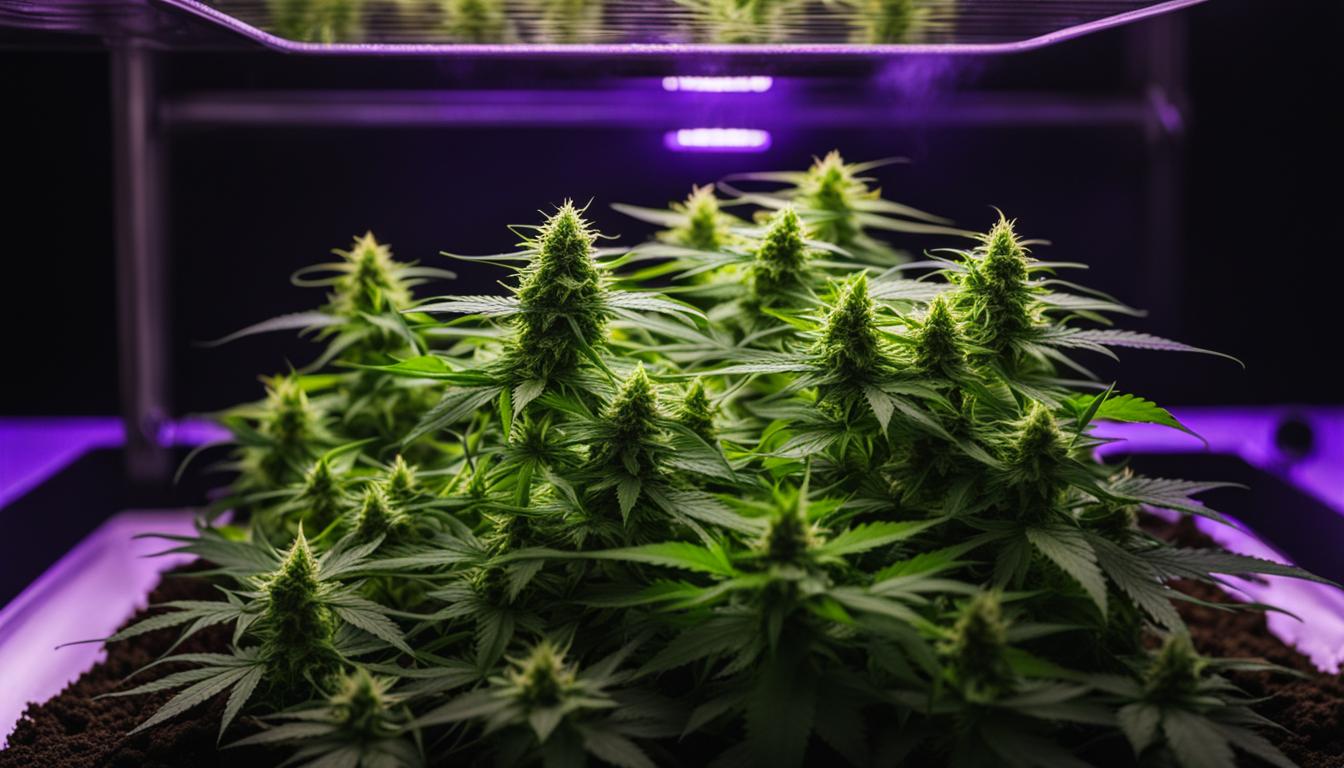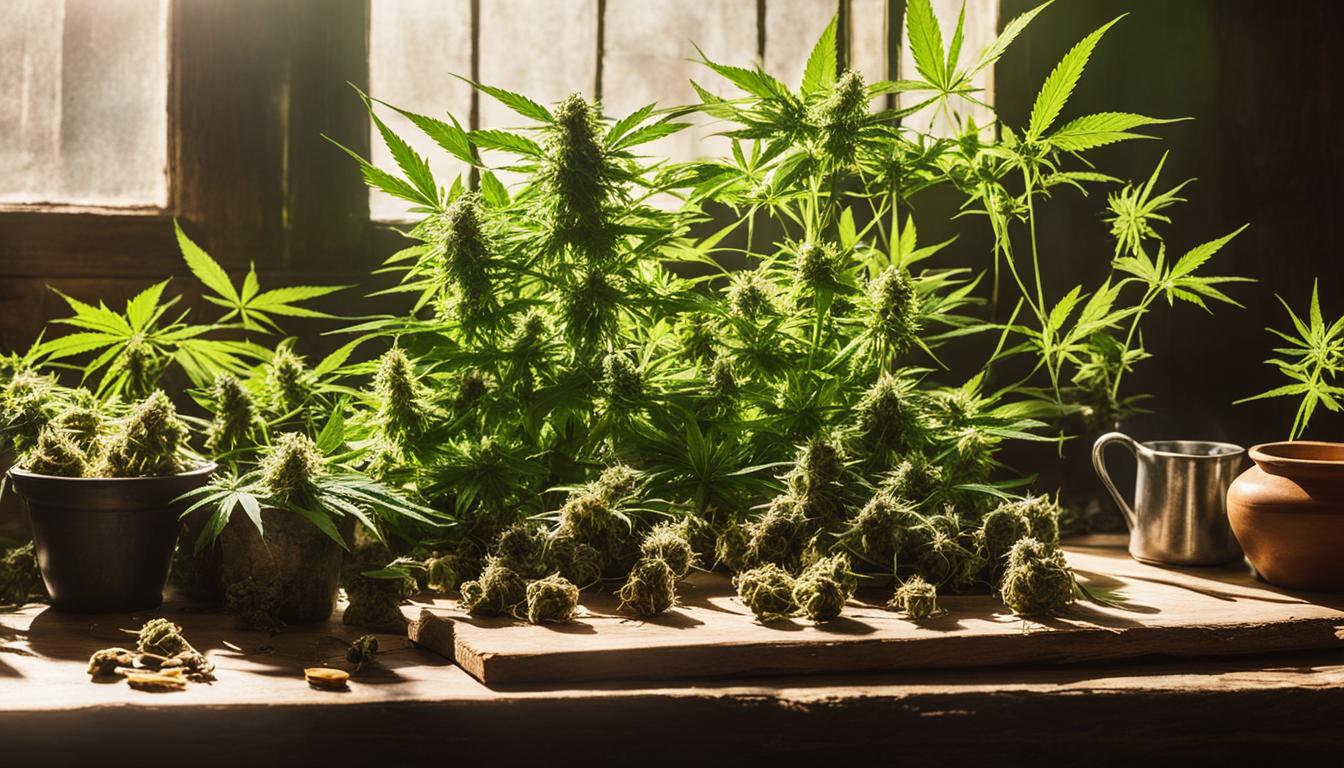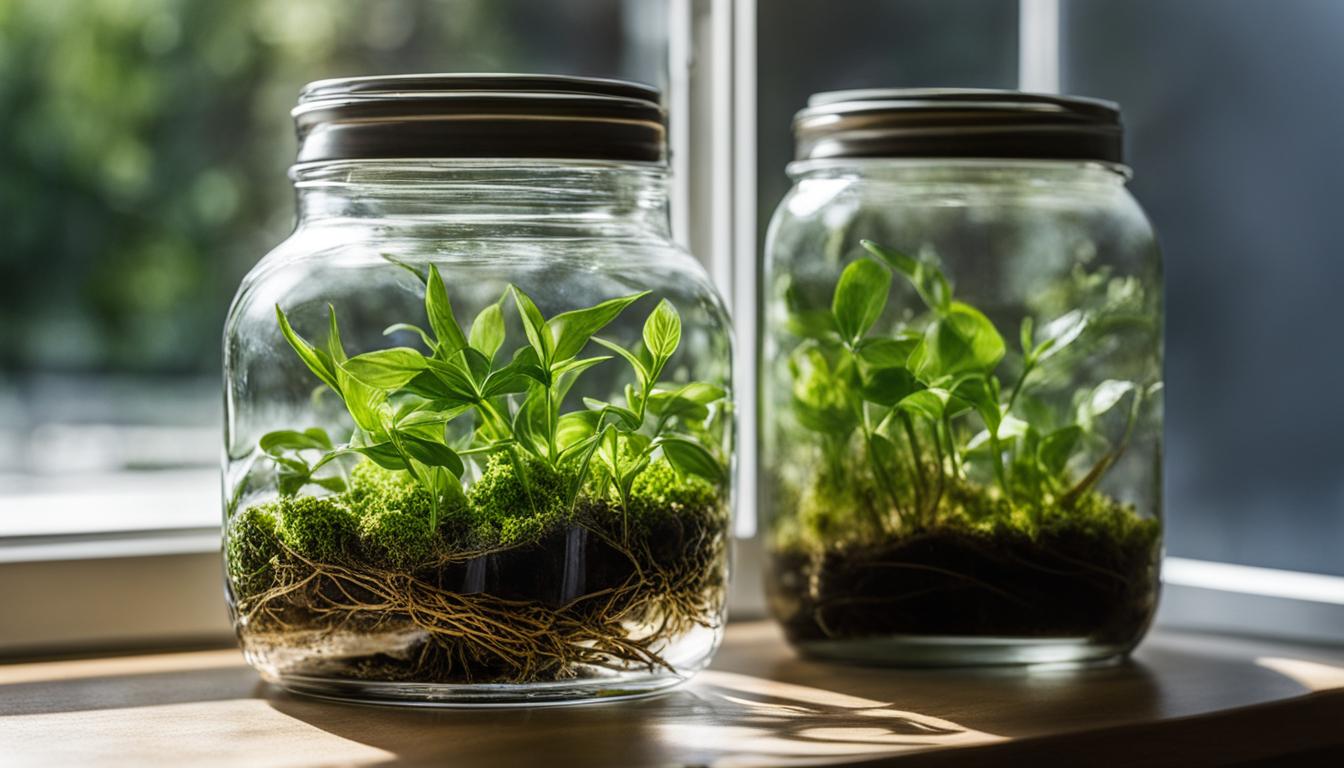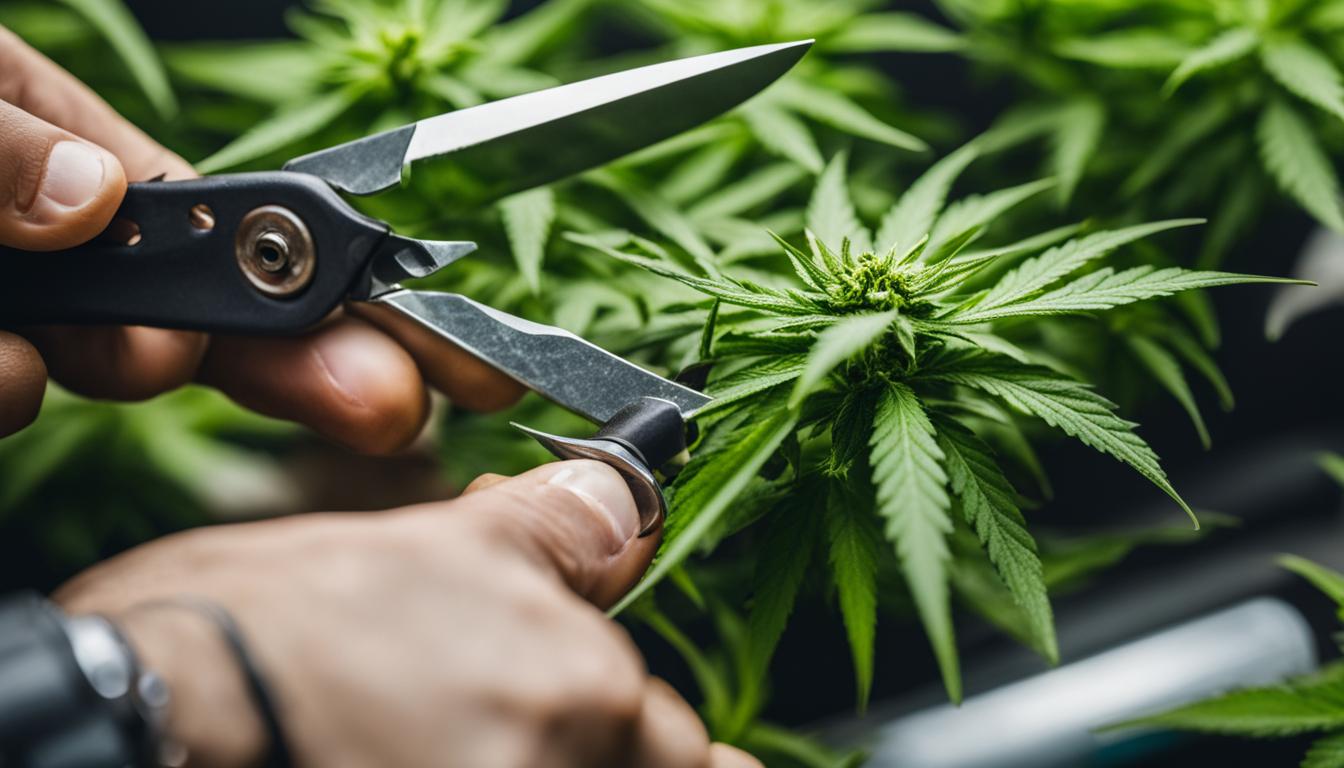Uncategorized
Guide to Successful Bouture Cannabis Cloning
Growing cannabis is an art, and one essential skill for every cannabis grower to master is the art of cloning. Cloning, or taking cuttings from a mother plant to create genetically identical offspring, is a popular method among cannabis enthusiasts for propagating their favorite cultivars.
In this guide, I will share with you the techniques, tips, and tricks to successfully clone your cannabis plants. Whether you’re a seasoned cultivator or just starting out, this guide will equip you with the knowledge you need to take cuttings, promote root growth, and ensure the success of your cannabis clones.
But before we dive into the specifics of cannabis cloning, let’s first understand the basics. Taking a cannabis cutting involves selecting a healthy and vigorous branch from a mature plant, then carefully removing it to create a clone. This process allows you to create identical replicas of your favorite cannabis strains, preserving their unique characteristics and ensuring a continuous supply of top-quality cannabis.
Are you ready to learn how to take a cannabis cutting and unlock the secrets to successful cannabis propagation? Let’s get started!
Key Takeaways:
- Cloning allows for the propagation of genetically identical cannabis plants.
- Taking a cannabis cutting involves selecting a healthy branch from a mature plant.
- Successful cannabis cloning requires promoting root growth and providing the optimal environment.
- Rooting hormones play a crucial role in promoting root development in cannabis cuttings.
- Using high-quality cannabis-specific rooting hormone products enhances cloning success.
Understanding Rooting Hormones
Rooting hormones play a crucial role in successful cannabis cloning. These hormones, such as auxins, cytokinins, and synthetic auxin like NAA, facilitate root growth and improve the overall success rate of cloning.
When it comes to natural auxins, indole-3-acetic acid (IAA) and indole-3-butyric acid (IBA) are the two most important ones for root development. They stimulate cell division and elongation, encouraging the formation of new roots.
Rooting hormone products commonly found in the market are often based on IBA or synthetic auxins like NAA (1-naphthaleneacetic acid). These hormones provide an additional boost to the natural auxins present in the plant, promoting faster and more reliable root growth.
Using rooting hormones can significantly increase the success rate of cannabis cloning, giving growers the confidence to propagate their favorite plants with ease.
Benefits of Rooting Hormones:
- Promote root growth
- Increase success rate of cloning
- Accelerate the formation of new roots
- Improve overall plant health
“Using rooting hormones can significantly increase the success rate of cannabis cloning, giving growers the confidence to propagate their favorite plants with ease.”
To visually showcase the effectiveness of rooting hormones, here is a comparison of the root growth of cannabis cuttings with and without the use of rooting hormones:
| Cutting Type | Root Growth |
|---|---|
| Cutting without Rooting Hormones | |
| Cutting with Rooting Hormones |
The image above clearly demonstrates the enhanced root growth achieved with the use of rooting hormones. The difference is striking, highlighting the importance of incorporating these hormones into your cannabis cloning process for optimal results.
Now that we understand the significance of rooting hormones, let’s explore the different rooting hormone products available in the market and how to choose the right one for successful cannabis cloning.
Choosing the Right Rooting Hormone Product
When it comes to cannabis cloning, selecting the appropriate rooting hormone product is essential for successful results. Let’s explore the three commonly-used forms of rooting hormone products: cloning powder, cloning liquid, and cloning gel.
1. Cloning Powder
Cloning powder is a favorite among commercial growers, especially for large-scale crops. It offers a long shelf-life, making it convenient for growers to use over an extended period. The powdered form allows for easy application and provides reliable results.
2. Cloning Liquid
Cloning liquid is a versatile option that can be used in different ways. It is ideal for immersing rooting mediums, allowing for consistent hormone distribution. Additionally, it is suitable for quick dipping of cuttings, making it a convenient choice for growers looking for efficiency.
3. Cloning Gel
For home growers, cloning gel is a popular choice due to its ease of use and effectiveness. The gel-based formula provides superior adhesion to cuttings, ensuring optimal hormone contact. This improves root development and increases the chances of successful cloning.
Each form of rooting hormone product has its advantages, and the choice depends on the specific needs and preferences of the grower. Whether you opt for cloning powder, cloning liquid, or cloning gel, using high-quality cannabis-specific brands is crucial for achieving the best results.
To further illustrate the differences between these products, refer to the table below:
| Rooting Hormone Product | Advantages |
|---|---|
| Cloning Powder | Long shelf-life |
| Cloning Liquid | Versatile application methods |
| Cloning Gel | Easy to use, superior adhesion |
Choosing the right rooting hormone product is a crucial step in the cannabis cloning process. Consider your specific requirements and preferences to select the most suitable option for your cloning endeavors.
Environmental Conditions for Successful Cloning
Creating an optimal environment is crucial for the successful rooting of cannabis clones. To ensure healthy root development, it is important to maintain specific conditions throughout the cloning process.
Light Schedule
Using a propagator under an 18-6 light schedule is ideal for cannabis cloning. This means providing 18 hours of light and 6 hours of darkness each day. This light schedule mimics the vegetative stage of growth, encouraging the clones to focus their energy on developing roots.
Light Intensity
The light intensity, measured in PPFD (photosynthetic photon flux density), is another important factor. For cannabis cloning, a light intensity of 60–250μmol/m²/s is recommended. This range provides enough light for photosynthesis to occur without overwhelming the delicate clones.
Temperature
Controlling the temperature is crucial for successful cloning. A temperature range of 20-24°C (68-75°F) is optimal. This ensures that the clones are warm enough to stimulate root development without being too hot, which could lead to mold or rot.
Humidity
Maintaining proper humidity levels is essential for the health and survival of cannabis clones. Ideally, the humidity should be kept between 70-90%. This high humidity helps prevent moisture loss from the clones, allowing them to focus on root growth.
By creating the right environmental conditions for cannabis cloning, growers can greatly increase their chances of success. Remember to monitor and adjust these conditions as needed throughout the cloning process to ensure optimal growth and root development.

Creating the right environment is crucial for successful cannabis cloning.
Natural Homemade Rooting Compounds
When it comes to promoting root development in cuttings, there are several natural and homemade methods that can be effective. These alternatives to commercial rooting hormone products can be easily made at home and provide great results.
One natural rooting compound that can be used is cinnamon. Not only does cinnamon act as an antifungal agent, protecting developing roots from pathogens, but it also stimulates root growth.

Another effective option is honey. Honey contains beneficial enzymes and vitamins that promote healthy root development. It acts as an antibacterial and antifungal agent, protecting the cuttings from infections.
If you have access to willow branches, you can create willow water. Willow water contains naturally occurring growth stimulants that can encourage rapid root growth. Simply soak a handful of willow branches in water overnight and use the infused water for watering your cuttings.
Aloe vera is another natural rooting compound that can be used. It contains salicylic acid, which acts as a growth stimulant for plant roots. Aloe vera gel can be extracted from the leaves and applied to the cuttings for better root development.
Diluted apple cider vinegar can also serve as a rooting tonic for clones. Apple cider vinegar contains helpful nutrients and organic acids that can aid in root development. Ensure to dilute the vinegar before using it, as the concentrated form may damage the cuttings.
Using these natural rooting compounds can be a cost-effective and sustainable way to promote root development in your cuttings. Experiment with different methods to find what works best for your plants.
Steps to Root Plant Cuttings in Water
Rooting plant cuttings in water is a simple and effective propagation method. It’s a great way to expand your plant collection and share your favorite plants with others. Follow these steps to successfully root your plant cuttings in water:
- Identify the cutting location: Choose a healthy plant and identify a suitable location to take the cutting. Look for a stem with multiple nodes, which are small bumps along the stem where new roots can form.
- Prepare the cutting: Using a clean sharp knife or scissors, carefully cut the stem just below the node. Make a clean, diagonal cut to maximize the surface area for root development. Remove any excess leaves or flowers from the lower part of the cutting to prevent them from rotting in the water.
- Place the cutting in water: Fill a clean glass container with room temperature water. Place the cutting in the container, ensuring that the node is submerged in water while the remaining stem and leaves remain above the waterline. The water should cover at least two-thirds of the cutting.
- Change the water regularly: To prevent the growth of harmful bacteria and ensure optimal root development, change the water every 3-5 days. When changing the water, gently rinse the roots to remove any debris or slimy film that may have formed.
- Observe root growth: Place the container in a bright location, but avoid direct sunlight. Over time, you will start to see roots growing from the node. Be patient, as it may take several weeks for visible roots to develop.
- Transfer to soil: Once the roots have reached a length of 3-5 inches, it’s time to transfer the cutting to soil. Prepare a pot with well-draining soil and create a small hole to accommodate the roots. Gently remove the cutting from the water, being careful not to damage the delicate roots, and place it in the hole. Firmly press the soil around the base of the cutting to provide stability.
Rooting plant cuttings in water is an exciting process that allows you to witness the growth and development of new roots. It’s a rewarding way to propagate your favorite plants and create beautiful displays in your home or garden.

| Advantages of rooting in water | Disadvantages of rooting in water |
|---|---|
|
|
Patience and Care for Rooting Plants
Rooting plants in water requires patience and care. To ensure optimal growth, it’s important to place the rooting plants in an area with bright indirect light. This type of light provides the ideal conditions for root development and supports healthy growth.
However, it’s important to remember that rooting plants can take time. Be patient as it can take weeks to months for roots to develop. Avoid the temptation to rush the process and give your plants the time they need to establish a strong root system.
When changing the water for your rooting plants, take the opportunity to rinsing the roots. This helps to remove any mucky film that may accumulate and ensures the roots remain clean and healthy. Keeping the roots clean promotes better absorption of nutrients and supports overall plant health.
If you’re propagating multiple plants, consider using a propagation station. A propagation station provides an organized and visually appealing way to display your rooted plants. It not only keeps everything neatly in one place but also allows you to monitor their progress easily.
Remember, the key to successful rooting is to provide the right environment and care for your plants. With bright indirect light, patience, regular rinsing of roots, and the use of a propagation station, you can ensure your plants have the best chance of thriving and growing strong roots.
Tips for Successful Rooting:
- Place your rooting plants in an area with bright indirect light
- Be patient and give the roots enough time to develop
- Rinse the roots when changing the water to maintain cleanliness
- Consider using a propagation station to organize and display your rooted plants
Example of a Propagation Station:
| Plant Type | Number of Rooted Cuttings | Status |
|---|---|---|
| Monstera Deliciosa | 5 | Ready for transplant |
| Spider Plant | 8 | Roots developing |
| Pothos | 3 | Roots starting to form |
Positive Reviews and Testimonials about Plant Cloning
Plant cloning has garnered a significant number of positive reviews and testimonials from satisfied buyers who have experienced success in propagating their plants. These testimonials emphasize the effectiveness of plant cloning methods and the joy of sharing and expanding their plant collections.
“I couldn’t be happier with the plant clones I’ve obtained using cloning techniques. The process was straightforward, and the results were amazing. I now have a thriving garden full of healthy and genetically consistent plants!” – Mary D.
“The plant cloning products I purchased exceeded my expectations. The success rate was remarkable, and I’ve been able to replicate my favorite plants effortlessly. It’s incredible to see how quickly my plant population has multiplied!” – Eric S.
These positive reviews and testimonials reflect the overall propagation success that growers have achieved through plant cloning. The ability to reproduce plants with precision and consistency has brought immense satisfaction to many gardening enthusiasts.
Seeing the positive results and hearing the success stories of other growers reinforces the confidence in using plant cloning techniques. Whether it’s expanding plant populations, creating identical copies of cherished varieties, or simply experiencing the joy of propagating plants, plant cloning has proven to be a game-changer for many gardeners.
Price Range and Availability of Plant Clone Products
When it comes to plant cloning, finding the right products at the right price is essential. Plant clone products are available in a wide range of prices, catering to different budgets and needs. Whether you’re a hobbyist or a commercial grower, there are options available for everyone.
Prices for plant clone products can start as low as $25 and go up to over $100. The cost can vary depending on the brand, quality, and quantity of the product. It’s important to consider your specific requirements and budget before making a purchase.
These products are readily accessible through various online marketplaces. You can find a wide range of sellers offering plant clone products, making it convenient to compare prices and read reviews before deciding on a purchase. However, it’s important to ensure that you are buying from reputable sellers to guarantee the authenticity and quality of the products.
The availability of plant clone products may also depend on your location and the specific strains or varieties of plants you are looking to clone. Some products may be more readily available for popular plant species, while others may be more niche or limited in supply.
Overall, with the increasing popularity of plant cloning, there are numerous options available for purchasing plant clone products. By exploring different sellers and considering your needs and budget, you can find the right products to support your cloning endeavors.
Price Range of Plant Clone Products
| Product Type | Price Range |
|---|---|
| Cloning Powder | $25 – $50 |
| Cloning Liquid | $30 – $70 |
| Cloning Gel | $40 – $100+ |
Benefits of Plant Cloning for Growers
As a grower, plant cloning offers numerous advantages that can greatly enhance your cultivation efforts. Let’s explore the key benefits of plant cloning:
1. Plant Propagation
Plant cloning allows you to reproduce an exact copy of a desirable plant through asexual reproduction. By taking healthy cuttings from a parent plant and providing them with the right conditions, you can propagate multiple plants with identical genetic traits. This method ensures consistency in plant quality, yield, and other desirable characteristics.
2. Genetic Consistency
With plant cloning, you can maintain the genetic integrity of your plants. This is particularly important when growing specific strains or cultivars that possess unique traits, such as disease resistance, high yields, or specific flavors and aromas. Cloning helps preserve these desired genetic qualities, ensuring a consistent and predictable outcome with each new generation of plants.
3. Cost-Effective
Plant cloning can be a cost-effective alternative to starting from seeds, especially when cultivating high-value or rare plants. By cloning successful and well-established mother plants, you eliminate the need to purchase new seeds or invest in expensive genetics. This significantly reduces costs while allowing you to expand your plant populations efficiently.
4. Breeding and Trait Maintenance
Plant cloning provides growers with an effective method for breeding and maintaining specific traits in their plants. By selecting the best-performing plants and cloning them, you can create a consistent line of offspring with the desired traits. This allows you to refine and improve your cultivars over time, ensuring the continued success and quality of your plants.
| Benefits of Plant Cloning | |
|---|---|
| Plant Propagation | Ensure the reproduction of desirable plants |
| Genetic Consistency | Maintain identical genetic traits in cloned plants |
| Cost-Effective | Save money by reproducing plants without purchasing seeds |
| Breeding and Trait Maintenance | Create consistent lines of offspring with desired traits |
By harnessing the power of plant cloning, growers can achieve remarkable results in their cultivation endeavors. Whether you’re aiming for consistent quality, cost savings, or targeted trait maintenance, plant cloning offers a practical and reliable solution.
Next, we’ll explore essential considerations for successful plant cloning, including rooting hormones, environmental conditions, and natural rooting compounds.
Conclusion
In conclusion, successful plant cloning requires a combination of experimentation, patience, and the strategic use of rooting hormones. By following proper techniques and providing the optimal environment for root development, growers can significantly increase their success rate in cloning cannabis plants.
It is important to remember that natural homemade rooting compounds, such as cinnamon, honey, willow water, aloe vera, and apple cider vinegar, can also be utilized as effective alternatives or supplements to commercial rooting hormone products.
With the right knowledge and care, anyone can master the art of plant cloning and enjoy the rewards of successful propagation. Whether you’re a commercial grower or a home grower, these tips for cloning cannabis will empower you to expand plant populations, maintain genetic consistency, and achieve cost-effective plant propagation.
FAQ
What are the types of rooting hormone products commonly used for cannabis cloning?
The three commonly-used types of rooting hormone products for cannabis cloning are cloning powder, cloning liquid, and cloning gel.
What are the important natural auxins for root development in cannabis cuttings?
The two most important natural auxins for root development in cannabis cuttings are indole-3-acetic acid (IAA) and indole-3-butyric acid (IBA).
What is the role of rooting hormones in cannabis cloning?
Rooting hormones promote root growth and improve the success rate of cloning by providing necessary growth stimulants.
What are the recommended environmental conditions for successful cannabis cloning?
A propagator under an 18-6 light schedule with a blue light spectrum and a PPFD light intensity of 60–250μmol/m²/s, a humidity level of 70-90%, and a temperature of up to 24°C are recommended for successful root development in cannabis clones.
Are there any natural alternatives to commercial rooting hormone products?
Yes, natural homemade rooting compounds like cinnamon, honey, willow water, aloe vera, and apple cider vinegar can be used as alternatives or supplements to commercial rooting hormone products.
How can I root plant cuttings in water?
To root plant cuttings in water, cut below the root node with a sharp knife or scissors and place the cutting in a glass container filled with room temperature water. Change the water every 3-5 days and transfer the cutting to soil once the roots reach 3-5 inches in length.
What should I do to ensure the success of rooting plants in water?
Place the rooting plants in an area with bright indirect light, be patient as roots can take weeks to months to develop, and rinse the roots and remove any mucky film when changing the water.
Are there any positive reviews or testimonials about plant cloning products and techniques?
Yes, buyers have left positive reviews and testimonials expressing satisfaction with the quality and success of their plant clones when using plant cloning products and techniques.
What is the price range and availability of plant cloning products?
Plant cloning products can be found in a wide price range, from less than $25 to over $100. The availability may vary depending on the location and specific strains or varieties of plants.
What are the benefits of plant cloning for growers?
Plant cloning allows for the propagation of high-quality plants with genetic consistency, is a cost-effective way to expand plant populations without seeds, and can be used for breeding and maintaining specific traits.

